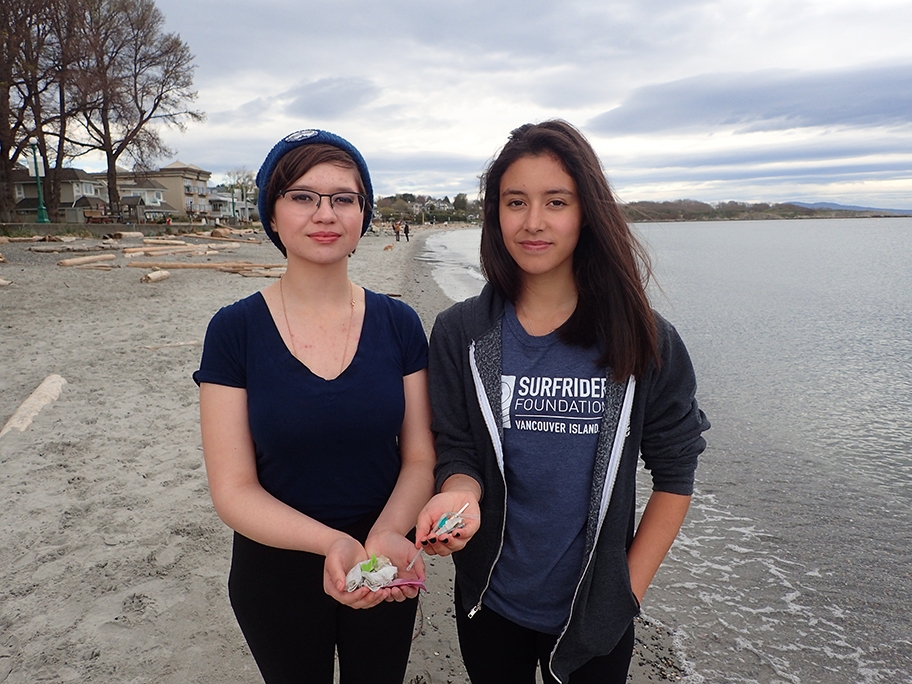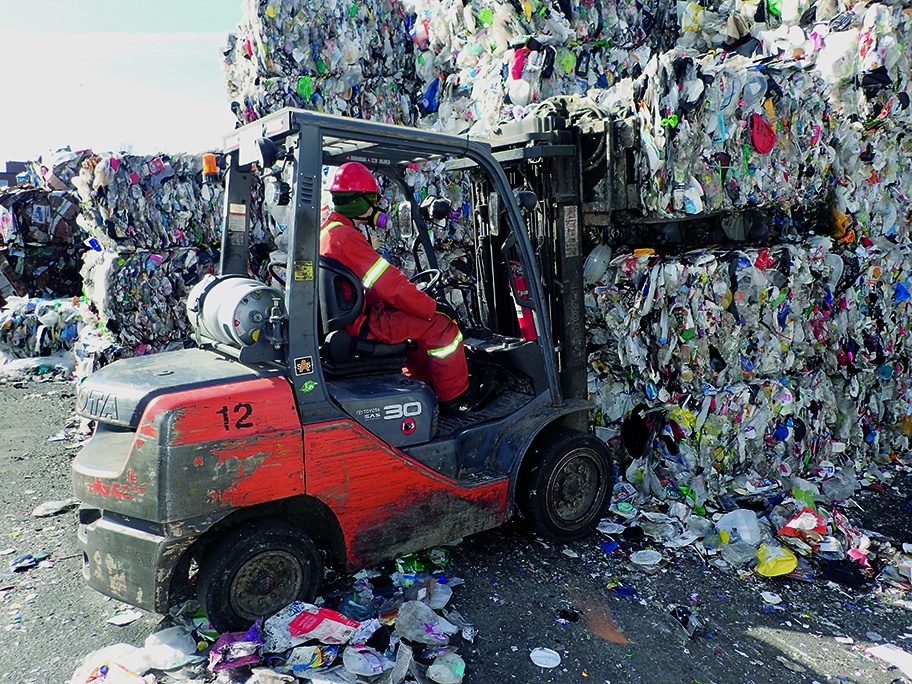
Is recycling enough, or should we ban some plastics completely?
You don’t have to look hard, but you do have to look. To the dog walkers and strolling families, Willows Beach appears pristine. Start hunting for garbage, though, and you’ll find lots of it in a few minutes. Drink-box straws, candy wrappers, globs of styrofoam, cling wrap, bits of broken toys, zip ties — all plastic, tangled in the wood and seaweed left at high tide.
“For many people, plastic is just a matter of convenience,” Anastasia Castro tells me, gathering bits from the sand. “They don’t see the real impact it has.”
Castro, a Grade 11 student at Glenlyon Norfolk School, is angry about the trashed state of the planet. So she’s been doing something about it. With her classmate Charlotte Brady, she spent two years speaking with City of Victoria staff and Downtown businesses, urging them to accept a ban on plastic checkout bags, which finally became enshrined in the City’s newsmaking 2018 bylaw. (Speaking to Victoria’s Council, she said: “It is not your world you are ruining, it is ours — the generations of the future who have to live in the mess you left behind.”) Last December, Courtenay-Alberni MP Gord Johns credited Castro in the House of Commons for driving his private member’s motion M-151, calling for a national strategy against plastic pollution, which passed unanimously. “Due to the hard work of incredibly dedicated Canadians like Anastasia,” Johns told MPs, “the crisis of marine plastic pollution has reached the national stage.”
That crisis certainly has become more apparent. The photo of the Costa Rica sea turtle with a straw stuck in its nose. The reports of whales found dead in Indonesia and Italy with kilos of plastic in their guts. The horrifying statistics, that we humans spill eight million metric tonnes of plastic into the seas every year, and at that rate, by 2050 there’ll be more plastic in the oceans than fish.
But as Castro and Brady point out, the problem isn’t only on the other side of the world.
The largest accumulation of plastic debris on the planet, the Great Pacific Garbage Patch — the subject of a new exhibit at the Maritime Museum of BC — consisting of some three trillion pieces of trash, swirls off our coast, halfway between California and Hawaii. In one day last October, volunteers led by the local chapter of the Surfrider Foundation removed more than 300 kilos of garbage from 10 Victoria beaches.
Even more debris in our waters consists of invisible microplastics, less than 5 mm in size, the product of household laundry and storm-drain runoff. Last year, Vancouver Aquarium scientists found 1,258 particles of plastic in one cubic metre of seawater taken from Burrard Inlet. Some of the same scientists have also found that plastic fibres are being ingested by zooplankton in the northeast Pacific — meaning they are likely being eaten by shellfish, crustaceans, salmon, and ultimately by ourselves, along with any toxic compounds that have bonded to the plastic.
Governments are starting to act. The European Union has declared that single-use plastic cutlery, plates, straws and containers will be outlawed in all member states by 2021. Vancouver is scheduled to ban styrofoam cups and takeout containers, along with straws and plastic cutlery, starting in 2020. Prince Edward Island’s province-wide ban on plastic bags, the first in Canada, goes into effect on July 1. In other words, Victoria’s bag bylaw, likely soon to be replicated in other capital-region municipalities including Saanich, Esquimalt, Colwood and Sooke, is just the beginning.
“We can’t let everyone believe that recycling is the be-all and end-all, and that if we ban plastic bags, we’ve done enough,” Charlotte Brady tells me. “Instead the conversation should be, ‘OK, we’ve taken this great first step. Now we need to go farther.’”
After you put an empty yogurt tub in a blue box, it gets picked up by a private waste-removal company and delivered to Cascades Recovery’s busy facility in Rock Bay. Trucks arrive from across the region, dumping glass, paper, cardboard, metals and plastics at different bays of the Cascades warehouse. Workers separate plastics from metals, Bobcat loaders push the plastics onto a conveyor belt, and they drop into a machine that packs them into freezer-sized bales, wrapped with wire. Then semi-trailer trucks take the materials off-Island. The facility handles 4,000 metric tonnes of material a month this way.

